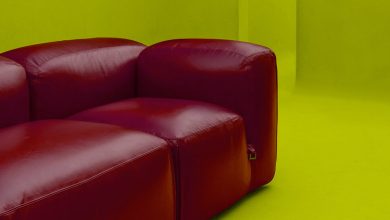Want a Better Society? Try Better Buildings.

When my family moved to Washington so that I could cover the Trump administration, I wanted to live in an apartment building. My wife objected, ascribing the desire to my Soviet childhood spent in a communal flat. I conceded the point: If the desire was rooted in a Proustian yearning, all the more reason to honor it.
We settled into a brick colonial. Still, one dreams. On my plodding runs, I regularly pass a residential building known as the Foxhall — nine curving, beige stories rising from parkland, its balconies jutting out like cliffs, solid and precarious at the same time. Floor-to-ceiling, wall-to-wall windows turn the building’s facade into competing bands of glass and concrete. I dream of life inside, which I idealize as a cross between college dorm and commune. Someone is always playing the piano, mixing drinks, baking cookies, learning to paint. Children run laughing through the hallways; people come out of their apartments, delighted at the sound, and they also begin to laugh.
Built in 1971, the Foxhall is a masterpiece of Brutalism, the architectural movement that tried to erect a better society from the rubble of World War II. The name is misleading: A style associated with collectivism, Brutalism is all about creating community through architecture. Its practitioners sought to satisfy our desire for belonging without playing to our penchant for cruelty. They wanted to use an inexpensive material — concrete, the material from which the movement gets its name — to create large, utilitarian buildings, often for communal living. Frequently maligned, Brutalism remains my ideal arrangement not only for housing but also for living. Standing before another Brutalist structure, the sublime Albany, N.Y., performance space known as the Egg — a windowless oval poised on a knife’s edge between motion and stillness atop its pedestal — I see the aspirations of a society more hopeful and audacious than our own.
My love of Brutalism began on the fourth floor of a Leningrad apartment building. It looked like an upright matchbox; identical matchboxes stretched in every direction, gray shapes dotting the gray landscape. My family’s building was cramped and dilapidated. It was also full of life, a beehive always buzzing. We played hockey in the courtyard without worrying about cars. Nobody warned me about “stranger danger.” Sure, there were the local drunks, the teenage hooligans who tortured stray cats, but even these wayward bees had a place in the hive.
Though our building was not, in academic terms, Brutalist, it instilled values that I would later recognize as Brutalist in essence. The meaning of those youthful experiences (their sharp edges smoothed by nostalgia) did not cohere until after my family moved to the United States in 1989, landing in the suburbs north of New York. It was a weird time to become American. These were the years of “superpredators,” when a racist panic was burrowing ever deeper into the anxious white imagination. Americans turned inward, from the front porch to the back patio, to private pleasures and secret fears. The empty streets, the barren lawns: Talk about brutal.



